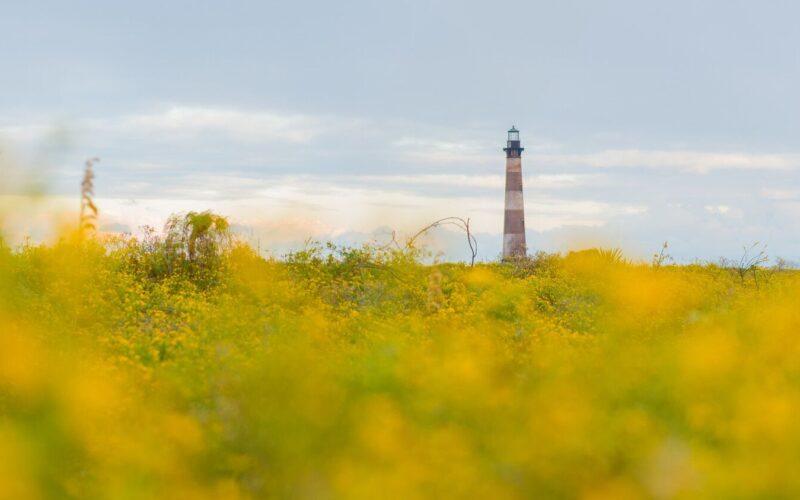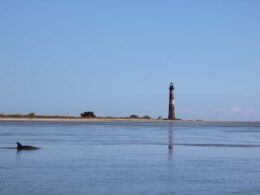As summer stretches on in an dizzying array of sunny days, the number of visitors flocking to Folly’s shores will seemingly grow exponentially. And as more people soak up our little beach town’s undeniable beauty and charm, there will naturally be more interaction between locals, the native flora and fauna, and tourists — or as Southerners call visitors, those “from off.”
Of course, one of the many wonderful things about Folly Beach is Her giving spirit. The people here have a reputation for welcoming everyone with open arms, as it should be. Not only is it the hospitable thing to do, but visitors are our city’s lifeblood.
Besides, who wouldn’t be happy to share this little slice of paradise?
As the thick of travel season sets in, though, there always seems to be an up-tic in conversations centering on appropriate travel decorum — particularly in regards to our coast. Those of us fortunate enough to live here are obviously deeply enamored with the beach and are understandably protective of its unique coastal ecology.
It can be easy, at times, to lose sight of the fact that not everyone grew up with the benefit of being immersed in coastal education and experience. On a social media forum I follow, one beloved Folly resident recently surprised the group by revealing she had never seen the ocean or set foot on its sandy shores until she was well into adulthood.
So while it can be upsetting to see our amazing coastal biodiversity mishandled in some way, it often has more to do with lack of knowledge than with lack of empathy.
In the spirit of sharing our seaside nirvana in its entirety, it’s up to those of us who are aware of coastal preservation habits to pass those along too. Education and encouragement are wonderful tools for inspiring others to get involved and act responsibly toward our environment.
Here are a few helpful pointers on environmental etiquette to keep in mind when you visit Folly Beach — whether you are “from off” or just a local looking for a little refresher (we can all use those from time to time, right?).
1. Flatten and/or Fill in the Sand Around You
Building sand castles is an iconic beach time activity, and no one wants to give up the gleeful feeling that comes with creating a perfect tower. Don’t worry — you don’t have to, as long as you don’t forget to fill in any holes and flatten any mounds you make in the process. Sea turtles, which are protected by state and federal laws, come ashore at night during the months of May through October to lay their eggs. They dig nests in the dry sand, trudge back to the sea, and a few months later roughly 100 hatchlings emerge and make their way to the surf. Holes and mounds of dirt can make this a perilous sojourn for the tiny sea creatures, so do your due diligence in flattening the sand around you before you leave. Some beaches have even instituted a fine for any holes left unfilled! But at the very least, dig holes and build sandcastles below the high tide line. If you happen to forget to fill and flatten, the ocean will do it for you.
2. Make Sure Everything That Came With You Leaves With You
A trip to the beach can easily entail lugging multiple bags filled with everything from food and drinks to sunglasses and hair bands. Sadly, so many of the things people cart to the beach wind up being left behind (inadvertently or otherwise) as litter. According to a new report from the World Economic Forum and the Ellen MacArthur Foundation, there are over 165 million tons of plastic in the ocean today. By the year 2050, there will be more plastic than fish. Bleak, right? Plastic and other debris left behind at the beach leads to habitat destruction, as well as entangling and killing tens of thousands of marine animals each year. Did you know that an estimated 90 percent of seabirds have plastic in their bellies? Be particularly mindful of every single thing you bring to the beach, and leave nothing behind — except your foot prints, as the adage goes.
3. Butt Out
As in, if you must smoke while at the beach, bear in mind that cigarettes do not biodegrade in sand. Subsequently, they can leach carcinogens and other toxic chemicals into the water — not to mention the potential harm they can cause if ingested by local wildlife. Last year, volunteers picked up approximately 6,500 cigarette butts from Folly’s beach over the course of only two days in September. That staggering figure should serve as incentive to ensure your butts wind up in the proper trash receptacle. And thanks to groups like Folly’s Green Tream and the Surfrider Foundation, doing so is easier than ever — you can find recently installed cigarette butt containers at various walkovers along the beach.
4. Be Aware of Consequences to Sea Creatures
People are naturally curious, particularly in environments that are unfamiliar to them. It’s not an uncommon site to see someone pulling a starfish out of a tide pool or plucking a sand dollar from the shallows and stashing it in their bag as a souvenir. However, you can (and you should) explore and appreciate the ocean and all her treasures without interfering with the local marine life. If a starfish is firm and its tube feet retract when you carefully touch its underside, it is alive and should be left alone — there is a sizable fine for taking live sea creatures from South Carolina beaches. If a sand dollar is alive, it will be covered in short, velvety spines and appear dark purple, reddish brown, gray, or green. If you come across a white or grayish white one sans fuzz, you’ve found a sand dollar skeleton or “test.” If you’re the kind of beachcomber more inclined to snag a shell or two, be sure you peer inside to make sure a crab hasn’t made its home there. If you do find the shell inhabited, gingerly place it back in the water. And, lastly, when exploring tide pools, check things out from the edge, as wading into them can harm the delicate marine life within.
5. Don’t Feed the Seagulls
If you’ve ever packed a snack for the beach, you undoubtedly know the feeling of having a throng of seagulls descend upon you in the hope you might toss a tasty morsel in their direction. Resist the urge to satisfy the seagulls’ craving, though, because doing so is unhealthy for these coastal birds in more ways than one. For starters, they are natural foragers and human food can make them sick. Second, some species of sea gulls are migratory. If they recognize a beach as a steady source of food from human hands, they may be tempted to set up camp during the migratory season, putting them at risk of starvation or freezing. Don’t feel bad for these hungry squawking gawkers … there are, quite literally, plenty of fish in the sea for them to make their next meal.
6. Become a Champion for Our Coastal Environment
There isn’t one single organism on Earth that isn’t connected to or affected by the ocean. It’s a vital system to our planet’s survival, so we should all take a vested interest in its health. If you are new to the area or simply have a desire to help keep Folly safe and clean, educate yourself about this unique coastal environment. If you live locally and feel you have a solid grasp on Folly’s preservation and protection, extend your activism by educating others when the opportunity arises. Should you happen upon a wayward traveler unwittingly mishandling marine life or walking on a sand dune, seize the moment to engage them in polite discourse about local environmental etiquette.













